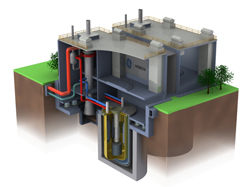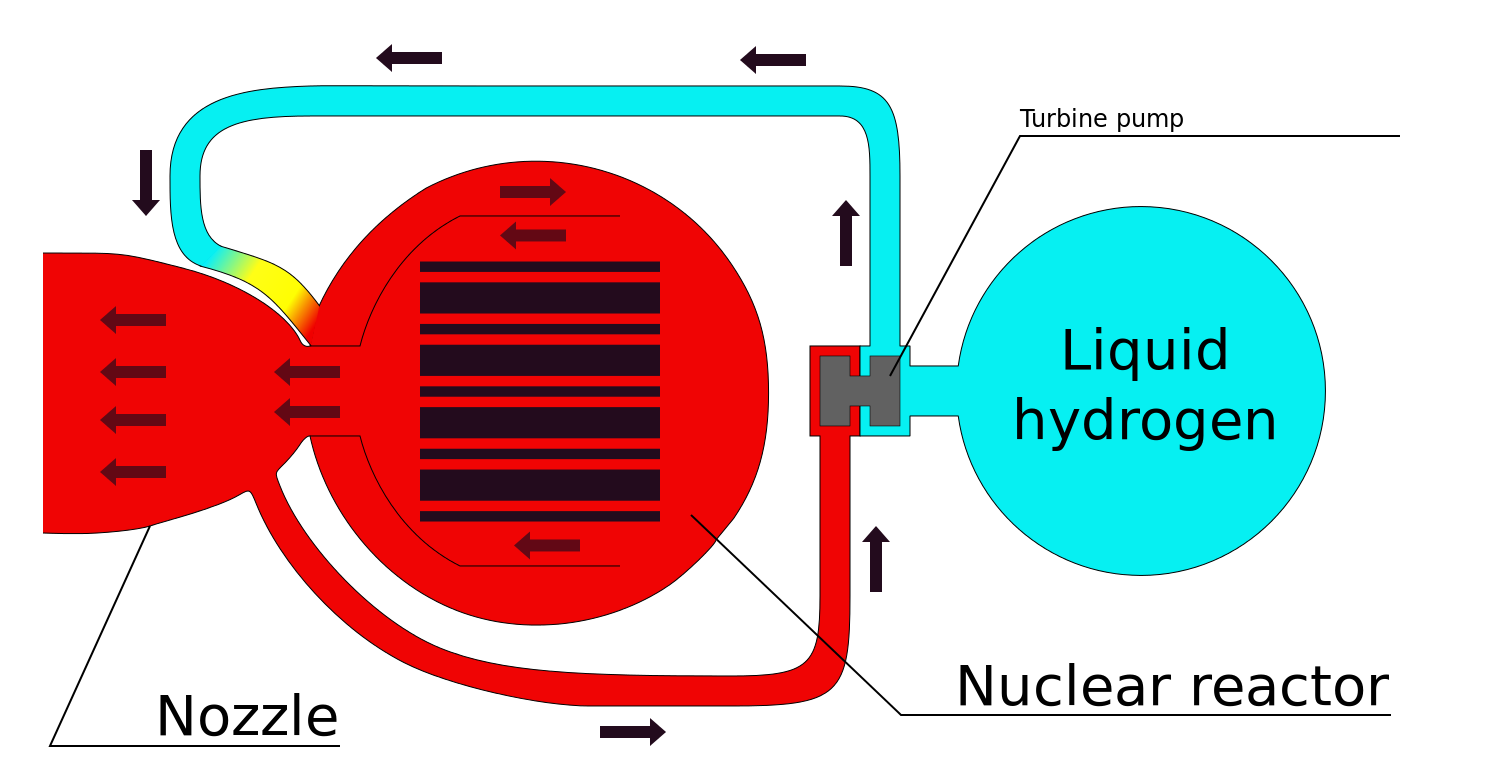The U.S. Department of Energy (DoE) is launching a new project referred to as the Versatile Fast Neutron Source project. This new reactor will be used to provide fast neutron testing capability to assist in the development of advanced nuclear reactor technology. The project is also called the Versatile Test Reactor (VTR).
Sources of fast neutrons for nuclear technology testing are only operating at a few places in the world and the U.S. has not had one for twenty years. This has prevented the U.S. from using accelerated irradiating testing on new reactor technology, fuels and related materials unless U.S. companies were willing to appeal to China or Russia to help with such testing.
The Nuclear Energy Innovation Capabilities Act was implemented last September. It directs the DoE to develop a reactor-based fast neutron source for testing advanced reactor components and fuels. In addition, it also directs the DoE to begin a program to use high-performance computer modeling and simulation techniques to assist in the development of new reactor technologies.
Rick Perry is the U.S. Secretary of Energy. He introduced the VTR program February 28th at a joint press conference with the Executive Director of the International Atomic Energy Agency. Perry said, “This cutting-edge Advanced Reactor will give American companies the ability they currently lack to conduct advanced technology and fuels tests without having to go to our competitors in Russia and China.”
The DoE says that the VTR will remove a “research gap” and “drastically” reduce the time required to test, develop and qualify advanced reactor technologies. It will also be critical in the creation of new fuels, materials, sensors and instrumentation. Ed McGinnis is the Principle Deputy Assistant Secretary of the DoE Office of Nuclear Energy. He said, “Having this domestic capability is critical to our national security and our ability to re-establish ourselves as a global leader in advanced reactor technologies.” The DoE Idaho National Laboratory has already selected GE Hitachi Nuclear Energy’ (GEH) PRISM technology to support the VTR project.
PRISM stands for Power Reactor Innovative Small Module. The PRISM is a GEH Generation IV reactor which GEH hopes will help close the nuclear fuel cycle in the U.S. PRISM is also part of the GEH proposal for its Advanced Recycling Center proposal which was delivered to the U.S. Congress as a way to deal with nuclear waste. PRISM is a sodium-cooled fast breeder reactor based on a scaled up Experimental Breeder Reactor II design. It is a commercial version of the Integral Fast Reactor that was developed by Argonne National Laboratory between 1984 and 1994.
The PRISM design is intended to be fabricated in factories to lower the cost and standardize the construction. It has passive cooling systems which will always operate and automatically lower the core temperature in case the reactor gets too hot.
GEH has been subcontracted to collaborate with the Bechtel Corporation to develop the design and cost estimates for the construction of an PRISM integral sodium-cooled fast reactor. On March 1st, DoE said that it will begin conceptual design of the reactor which may be completed as early as 2026.
Author: Burt Webb
-

Nuclear Reactors 660 – U.S. Department of Energy Is Building A Fast Breeder Reactor To Help Test Advanced Reactor Fuels And Materials
-

Geiger Readings for Mar 04, 2019
Ambient office = 103 nanosieverts per hour
Ambient outside = 119 nanosieverts per hour
Soil exposed to rain water = 118 nanosieverts per hour
White onion from Central Market = 116 nanosieverts per hour
Tap water = 100 nanosieverts per hour
Filter water = 93 nanosieverts per hour
-

Geiger Readings for Mar 03, 2019
Ambient office = 100 nanosieverts per hour
Ambient outside = 130 nanosieverts per hour
Soil exposed to rain water = 129 nanosieverts per hour
Green beans from Central Market =80 nanosieverts per hour
Tap water = 87 nanosieverts per hour
Filter water = 66 nanosieverts per hour
-

Geiger Readings for Mar 02, 2019
Ambient office = 102 nanosieverts per hour
Ambient outside = 110 nanosieverts per hour
Soil exposed to rain water = 106 nanosieverts per hour
Potato from Central Market = 93 nanosieverts per hour
Tap water = 84 nanosieverts per hour
Filter water = 80 nanosieverts per hour
Wild Rock Fish – Caught in USA = 91 nanosieverts per hour
-

Nuclear Reactors 659 – New NASA Budget Provides One Hundred Million Dollars For The Development Of Nuclear Thermal Propulsion
I have written before about the possibility of using nuclear power to propel spacecraft. This idea has been around for decades but despite success in designs and testing of nuclear thermal propulsion (NTP) system it was abandoned as interest in space exploration waned in the early 1970s.
Los Alamos Scientific Laboratory began researching nuclear engines for spacecraft in 1952. By 1955, this research was consolidated under Project Rover. Progress was swift and the NASA Marshall Flight Center began planning for test flights of nuclear engines as early as 1964. The Space Nuclear Propulsion Office was created about that time so that NASA and the Atomic Energy Commission could work together on advanced nuclear propulsion systems. The Director of the new SNPO decide to delay the nuclear engine tests until a strict set of objectives could be accomplished.
Aerojet and Westinghouse were selected by the SNPO to work in the design of the Nuclear Engine for Rocket Vehicle Application (NERVA). Different reactors and engines were designed and tested until around 1966 when a final design called the NERVA NRX/EST engine began tests. Several versions of NERVA were successfully tested and verified that the final design could produce about twice as much power as a comparable chemical engine. NASA was planning on using NERVA for a number of projects including a manned plight to Mars in 1978 but Congressional support faded, and budgets were cut. Although the tests were successful, the NERVA program ended in 1972.
There is a hundred million dollars in the NASA budget recently passed by Congress for the development of nuclear thermal rocket engines which NASA hopes to demonstrate by 2024.
In a nuclear thermal rocket engine, liquid hydrogen is superheated in a nuclear reactor and the resulting plasma is shot out of the engine to provide thrust. NPT would be much more efficient current chemical rocket fuel. With more powerful engines, spacecraft should be able to travel farther faster and with less fuel. This would also result in astronauts experiencing much less radiation and microgravity than traveling in current spacecraft. Compared to the NTP systems studied for the NERVA project, subsequent developments in nuclear technology will permit engineers to design and construct much cheaper, lighter and safer spacecraft. All of the current launch systems including the Space Launch System, the SpaceX Starship and the Blue Origin New Glenn could be improved by the use of NTP systems.
One problem that will plague the development of any NTP system will be public opposition from the anti-nuclear movement over fears of nuclear accidents during launch. Of course, NASA will do it’s best to minimize any risks attending the launch of NTP systems. This will not prevent demonstrations or lawsuits, but they will counter the arguments of the anti-nuclear activists.
While our current space programs will continue to land probes on the Moon, Mars and other astronomical bodies such as asteroids which will provide a lot of scientific knowledge, NTP might allow humanity to expand and settle the whole solar system. NTP system will move more cargo and people, faster, further and cheaper than current rocket technology. -

Geiger Readings for Mar 01, 2019
Ambient office = 58 nanosieverts per hour
Ambient outside = 122 nanosieverts per hour
Soil exposed to rain water = 122 nanosieverts per hour
Garlic bulb from Central Market = 99 nanosieverts per hour
Tap water = 73 nanosieverts per hour
Filter water = 66 nanosieverts per hour
